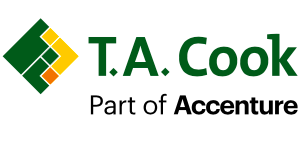Plant STOs (Shutdown, Turnaround, Outages) are often thought of as maintenance events where the bulk of work is carried out by non-Operations personnel. However, some STOs are actually quite different. Many chemical manufacturing facilities have smaller events. Their scope is driven strictly by the internal condition (cleanliness) of key equipment, and the work is executed primarily by a team of Operators. Since Operations-led events tend to be shorter in nature, a structure on how to approach these types of events is commonly overlooked. While such events may differ in duration and cost, the concepts that apply to managing a large, multi-week, multi-million-dollar STO can be applied to managing a 2- to 3-day wash event.
In this case study from a Texas chemical plant, T.A. Cook explains how sites can effectively structure these washes similar to racetrack “pit stops” and, in the process, maximize production.

APPROACH
Early in 2017, a team of “Cookies” was invited to evaluate sources of production loss at a chemical manufacturing facility in Texas. As part of the structured-analysis process, production-loss events and drivers were categorized into scheduled and unscheduled sources of loss. It was observed that multiple production units were shutting down for cleanings more often than in previous years, and the shutdowns were taking longer than previous averages (by over 35% to 85%).
A joint task force comprising T.A. Cook’s experienced STO and Operations consultants, and the client’s in-house chemical-process experts and wash-execution team were asked to dig deeper the situation, pinpoint why it was happening, and implement solutions to eliminate these losses.
Findings. . .
Through wash observations, data collection and evaluation, and conversations with multiple team members, the consultants discovered that short, focused events, once a mainstay at the site, had become multi-day, loosely managed washes and maintenance events. The same problems that plagued an average turnaround were now affecting these short-duration washes.
The following issues negatively impacted washes:
-
- scope creep
- missing scope challenge methodology
- vague cleaning guidelines and procedurespoor schedule adherence
- lack of clearly defined preparation activities / deadlines (roadmap to execution)
- missing risk identification process / risk register
- no formal meeting structure / agendas prior to execution.
The bottom line is simple. Over time, people changed. Processes were ignored and/or forgotten. And focus was lost. Period. Getting the team back on board was a joint effort between members on both sides. The “Cookies” had site members on their team that knew wash duration could be reduced—because they experienced it. They had Process Engineers that could pull supporting data to show when fouling was likely to occur over time, and results of historical washes and how extensive they had become. Without this team effort and credible people that believed in in it, buy-in and sustainable results would have been far more difficult to achieve.
Refocus. . .
To address these issues, the team agreed on regular wash-reduction team meetings and outlined a path forward. Meetings were also set up with plant personnel that executed washes and Production and Maintenance people, to review the same data and findings mentioned above. Once the intentions were clear, the path forward was relatively smooth. The team filled most of the gaps over a two- to three-month period, implementing missing processes and updating those that were no longer being used. As a result, they began realizing benefits over a relatively short amount of time.

ACHIEVEMENTS
The joint team successfully realized improvements through the implementation of a “pit-stop” approach to these scheduled shutdowns for cleaning of process equipment. The benefits of this workstream resulted in several additional production campaigns, providing the opportunity for this client to produce more of its high-valued chemicals.
An additional outcome of this optimization was that the cost of maintenance work performed during these outages could be controlled, resulting in an overall reduction in maintenance expenses due to the higher cost of hiring specialized resources to perform maintenance during a plant shutdown, and expediting of required parts due to discovery work.
The client team’s commitment to sustainability eventually provided an unmeasurable and unexpected benefit from this work. The chemical product manufactured in the focused production units became critical in the fight against COVID-19. In turn, that allowed the client to produce increased volumes as a raw material for the production of Personal Protective Equipment (PPE) during the pandemic.
Increases in commodity prices further delivered millions in increased revenue from the plant’s ability to increase production without needing to shut down for cleanings as frequently or as long as it had chosen to do in recent years.♦♦♦




